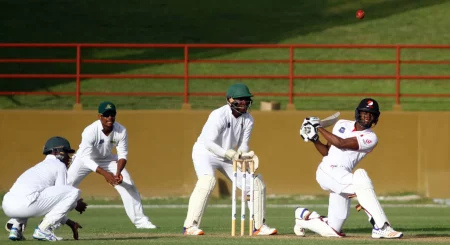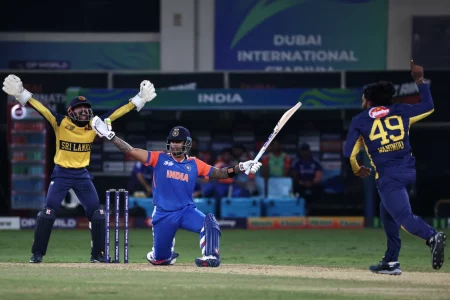Steven Smith’s return to the team is starting to look like a matter of ‘when’ rather than ‘if’. It’s hardly been over a week since he was knocking balls in New York with a tennis ball and an incrediball, but the kind of character he is, he’d want to hit the ground running as soon as he can.
Smith suffered a compound dislocation in his little finger during the World Test Championship (WTC) Final at Lord’s while attempting a catch off Temba Bavuma in the slips. He opted out of surgery to ensure he doesn’t lose much time off the field. Currently, his finger is still in a splint and will remain that way until at least August. This means if he returns, he will have to bat with the splint on. This also means that fielding in the slips will be off-limits for him.
His inclusion in the team, however, depends upon how his training sessions go. Australia’s head coach, Andrew McDonald, doesn’t see any risk in playing him at No. 4 if all goes well until the eve of the second Test game in Grenada.
“It’s really about functionality around the finger rather than anything else,” said head coach Andrew McDonald. “There’ll be no risk to the long-term health of that finger. He’ll return, and I think it’s likely he’ll play. Leading into the next game, he’ll have the main session two days out. He’ll [also] train the day before [the match]. If that all goes well, then I’d expect Steve to resume at No. 4.”
Australia scouted Josh Inglis at two down in Smith’s absence in the opening Test. Inglis, who played his third red-ball game in Barbados, had only once batted at that position, that too in first-class cricket. But with Smith back, there won’t be any need to have someone else fill the all-important spot, so thinks McDonald, who doesn’t want to fix what isn’t broken.
“In terms of why we see him as No. 4, I think we’ve settled on that. We could slide him up higher if we wanted to. He’s been excellent at number three. But I think if you look at the last 12 months at No. 4 and his ability to stabilise that position, two down, arguably our greatest batter, we want to keep him at four and build around that rather than potentially risking too many moves in the order.”
With Smith out, Marnus Labuschagne dropped, and Usman Khawaja not putting a value on his wicket, Australia’s top order grew rather weak. This did give Labuschagne some hope to get a go once again with the side. But if Smith returns, Australia might consider releasing Labuschagne from the squad to let him find some game time. He could turn out for Glamorgan or feature in the Australia A series against Sri Lanka A in Darwin next month, with the first four-day game starting on July 13, around the same time the final Test in Jamaica gets underway.
“If we do have a surfeit of batters then we’ll explore match opportunities for sure,” McDonald said. “I think we’ve done that with the fast bowlers over time. We’ve sent Scott Boland back from India. So if we feel as though we’re carrying too many, we’ll look for game time.
“[But] it’s a long way for players to get here as well. If we release someone and then someone has to come in late, then it’s a big journey. So we’ve just got to balance that out.”
Labuschagne, even if moved around for red-ball cricket, remains central to Australia’s one-day plans as McDonald flagged his inclusion for the upcoming ODI series against South Africa in the Top End this August.
“He’s important in our one-day structure,” McDonald said. “[With] Steve Smith’s recent retirement, Glenn Maxwell is retiring as well. We don’t want to compromise one-day cricket in the build towards 2027.”



